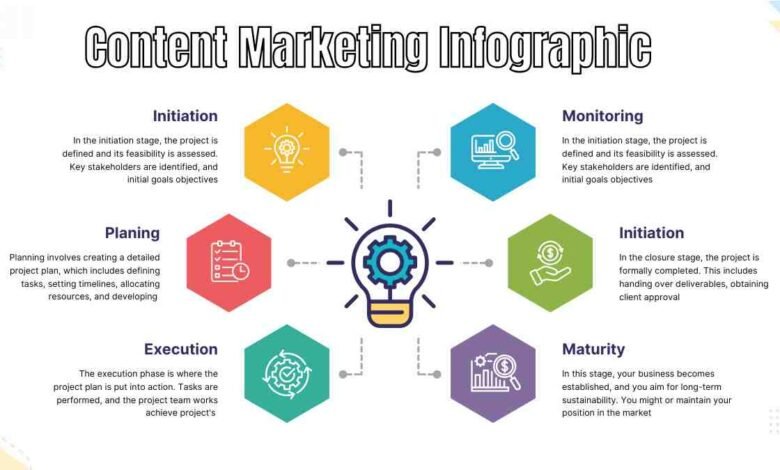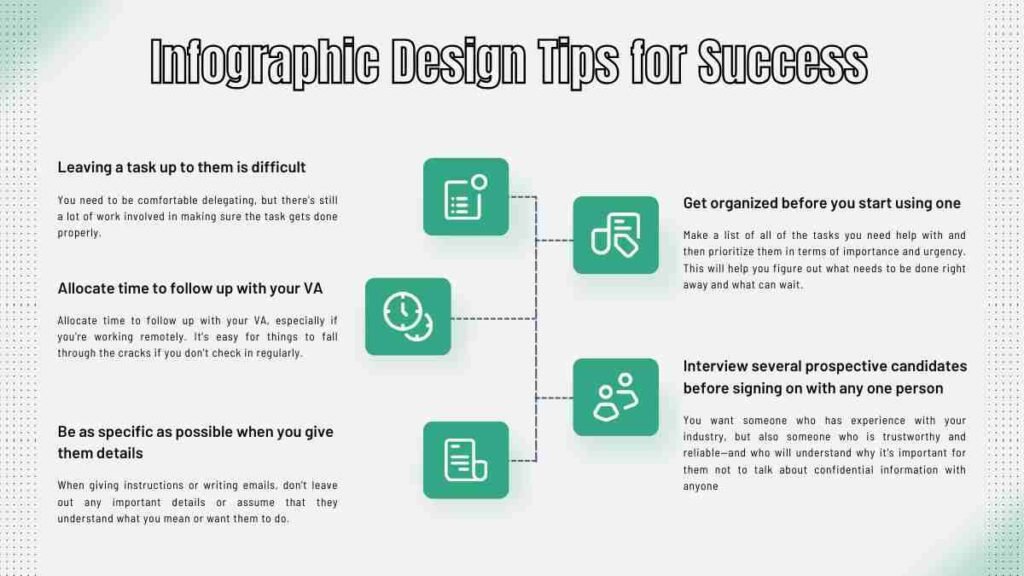Content Marketing Infographic: How to Create Stunning Visual

Content marketing infographic, content marketing has evolved beyond blogs, articles, and text-based strategies. Visual content, especially infographics, has emerged as a key player in engaging audiences. As the saying goes, “A picture is worth a thousand words,” and in content marketing, the right visual representation can make all the difference. This article explores how infographics play a crucial role in content marketing, offering valuable tips for design, strategy, and distribution.
The Rise of Visual Content in Marketing
In a world where people are constantly bombarded with information, attention spans are shrinking. This has given rise to the need for quick, digestible, and visually appealing content. Infographics, with their ability to combine images, data, and minimal text, serve as a powerful tool for simplifying complex information and making it easier for audiences to understand.
Why Infographics Work
Infographics work because they leverage the brain’s ability to process visuals faster than text. Human brains are wired to process images 60,000 times faster than words. This makes infographics an ideal format for content marketing, as they can convey information in a visually stimulating and engaging manner. The right infographic can tell a story, present data, and educate an audience all at once, making it a preferred choice for marketers.
The Role of Visual Content Strategy
A visual content strategy is essential for creating infographics that resonate with your audience. It’s not just about making something pretty; it’s about aligning your visuals with your overall marketing goals. You must consider what message you want to convey and how visual storytelling can support your brand’s voice and message. Your strategy should include a plan for how visuals like infographics will fit into your broader content marketing efforts.
Steps to Building a Visual Content Strategy
Understand Your Audience
Before designing your infographic, it’s crucial to understand who your audience is and what kind of information they are looking for.
Set Clear Goals: Content Marketing Infographic
What do you want to achieve with your infographic? Is it to educate, inform, or entertain? Defining your objectives will shape the design and distribution strategy.
Research Data
Infographics rely heavily on accurate and relevant data. Invest time in researching credible sources to support the information presented.
Choose the Right Format
Decide on the type of infographic that suits your purpose—whether it’s statistical, process-driven, or a timeline.
Infographic Design Tips for Success

An effective infographic is a combination of great design and useful information. Here are some essential design tips to keep in mind when creating infographics:
Keep It Simple
Simplicity is key. Overloading an infographic with too much information or too many design elements can overwhelm the viewer. Focus on a single message or a few core ideas that you want to communicate clearly.
Use Consistent Branding: Content Marketing Infographic
Your infographic should reflect your brand’s colors, fonts, and style. Consistency with your overall brand identity is important because it makes your content easily recognizable.
Prioritize Readability
Ensure that your infographic is easy to read. This includes choosing legible fonts, using contrasting colors for better visibility, and organizing information logically. Text should be kept minimal, and focus should be on visuals.
Balance Data and Design
While visuals are crucial, the data presented in an infographic must be accurate and valuable. The design should complement the data rather than distract from it. Visual elements such as graphs, charts, and icons can make data more digestible, but they should never overshadow the actual information.
Make It Mobile-Friendly
With a large portion of users accessing content through mobile devices, it’s important to design infographics that look great on smaller screens. Use vertical layouts and avoid using text that’s too small.
Data Visualization: Turning Data into Stories
Data visualization is at the heart of infographic design. It’s about turning raw numbers and facts into a visual narrative that makes the data easy to understand and engaging for your audience. By combining creativity with analytical information, data visualizations can transform complex data into compelling stories.
How to Visualize Data Effectively
Select the Right Type of Chart
Choose the type of chart or graph that best represents the data—bar charts for comparisons, pie charts for proportions, and line graphs for trends.
Highlight Key Data Points
Don’t try to display every piece of data. Focus on the most important figures and highlight them using color or larger fonts to draw attention.
Tell a Story: Content Marketing Infographic
Use data to create a narrative. Start with an introduction to the data, followed by the main points, and conclude with insights or recommendations.
Engaging Visual Storytelling
An infographic is more than just a collection of images and data; it tells a story. Engaging visual storytelling captures the audience’s attention, keeps them interested, and makes the content memorable. A well-crafted infographic uses visual storytelling to guide the viewer through the content in a logical and enjoyable manner.
Elements of Visual Storytelling in Infographics
Clear Narrative Flow
The information should flow naturally from one point to the next, making it easy for the viewer to follow.
Visual Hierarchy
Use size, color, and placement to create a hierarchy that leads the viewer’s eye through the infographic. Important points should stand out visually.
Emotionally Resonant Imagery
The images used in infographics should evoke an emotional response that reinforces the message. Whether it’s through color choices or the type of imagery used, visuals can enhance the emotional appeal of your content.
Distribution Channels for Infographics

Creating a stunning infographic is only half the battle; distributing it effectively is just as important. Infographics can be shared across a variety of content distribution channels to maximize their reach.
Social Media Platforms
Social media is a natural fit for infographics due to its visual nature. Platforms like Pinterest, Instagram, and LinkedIn are particularly effective for sharing infographics, where visual content performs well. You can also use Twitter to share snippets of your infographic with a link to the full version.
Email Marketing
Infographics can enhance your email marketing campaigns by providing valuable content that’s easy to digest. Including an infographic in your email newsletter can boost engagement rates and encourage shares.
Blog Posts and Websites
Embedding infographics within blog posts or on your website can increase time spent on the page and reduce bounce rates. They can also break up large blocks of text, making content more engaging and reader-friendly.
Outreach and Guest Posts
You can reach a wider audience by offering your infographics as part of guest posts or by reaching out to industry blogs and websites to feature them.
Conclusion
Infographics have proven to be an effective tool in content marketing, combining visual elements with data and storytelling to engage audiences. By integrating a strong visual content strategy, following key design principles, and distributing your infographics through the right channels, you can enhance your content marketing efforts. As the digital world continues to prioritize visual content, mastering the art of infographic creation will give your brand a competitive edge.
FAQs
What is the ideal length for an infographic?
The ideal length depends on the content, but it’s generally best to keep infographics between 600 and 1,800 pixels in height to maintain viewer interest.
How can I make my infographics more shareable?
Focus on visually engaging content, include social media sharing buttons, and use a catchy title that grabs attention.
Are infographics good for SEO?
Yes, infographics can boost SEO by attracting backlinks and increasing engagement on your site, which are important factors for search rankings.
What tools can I use to create infographics?
Popular tools include Canva, Adobe Spark, and Piktochart, which offer user-friendly interfaces for designing professional infographics.
How often should I use infographics in content marketing?
Infographics should be used when data needs to be simplified or when you want to visually enhance complex information, but they shouldn’t be overused.




